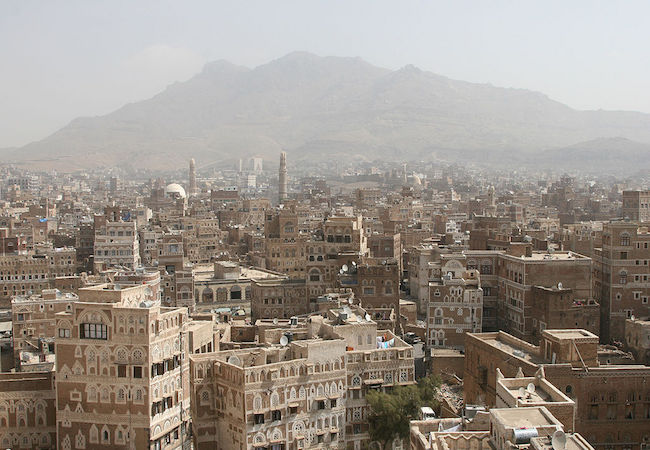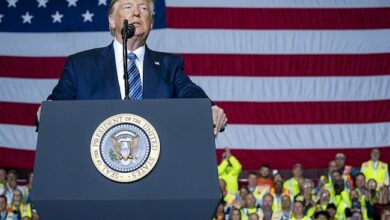A look at Yemen conflict

By Nisar Ahmed Khan
In a latest twist in the ongoing Yemen civil war, forces loyal to President Abdrabbuh Mansur Hadi, backed by Saudi-led coalition and Southern separatists backed by United Arab Emirates (UAE) have turned against each other thereby exposing the fragility of the coalition against Houthis and differences between Saudi Arabia and the UAE. This also exposes the ill-informed US approach towards Yemen where it backs the Saudi-led coalition against Houthis. The US obsession with Iran has blinded it to see the complex dynamics of Yemen conflict.
The latest clashes erupted on 28th January after the expiry of a deadline set by the separatist Southern Transitional Council (STC) for a cabinet reshuffle, including the removal of Prime Minister Ahmed bin Daghar. This infighting between the allies demonstrates the futility of the disastrous and costly military approach adopted by the Saudi-led coalition which is backed by the US, UK and France in terms of providing weapons, intelligence sharing etc.
The immediate roots of the current conflict in Yemen can arguably be traced back to 2011, when disillusioned with long-held authoritarian regimes and dictatorships, people resorted to protests and strikes in several states in the Middle East and North Africa Region, which came to be known as Arab Spring or Arab Uprising. Yemen was not exception to the popular uprisings. Protests erupted against the high unemployment, poor economic conditions, and widespread corruption that affected much of the country. The protests soon escalated to demand the removal of President Abdullah Saleh, who had been ruling the country for more than 30 years, first in the North Yemen and then over the entire country after unification in 1990.
However, as the pressure mounted, Saleh had to transfer power to his Vice President, Abdrabbuh Mansur Hadi in November 2011. The National Dialogue Conference envisioned and established as a part of the transition agreement failed to address the grievances of the revolution period and bring together the diverse political, religious, and tribal groups to work together to rebuild the governmental structures due to elitist and non inclusive character of the entire process.
In the time following the NDC, political infighting continued and most Yemenis did not feel that the Hadi had greatly improved their situation. Hadi Government’s failure to provide security and basic goods compelled the Houthis, the Southern secessionist movement, and some youth groups to officially reject the GCC-brokered peace deal. Also, they increasingly felt unrepresented in the political process.
As popular political dissatisfaction grew in Sana’a, former President Saleh re-entered the political arena and instituted a pragmatic alliance with the Houthis in the hope of consolidating power to regain political control. When President Hadi proposed a new draft constitution in 2014, Houthis launched anti-government protests and mounted a military takeover of Sana’a backed by Saleh’s strategic logistical support, vast patronage networks, and additional fighting forces. They also took control of the presidential palace in January 2015, installed themselves as an interim government, and placed Hadi under house arrest, where he issued his resignation. About one month later, Hadi escaped and fled to Aden where he rescinded his resignation and denounced the Houthi takeover. As the Houthi movement pushed increasingly southward towards Aden, President Hadi fled to neighboring Saudi Arabia.
From Saudi Arabia, he formed an anti-Houthi coalition with support from Western and GCC allies to counter the Houthi advance. Backed by nine other, mostly Arab states, Saudi Arabia launched a disastrous indiscriminate military campaign after the Houthi capture of a strategic military base north of Aden on March 25, 2015.
This is generally considered the starting point of the current Yemen war. The Saudi-led assault has largely consisted of aerial strikes on indiscriminate or disproportionately civilian targets, naval blockades, and deployment of ground forces to areas of strategic importance, such as airports and seaports. The Houthis, in turn, have engaged in heavy ground fighting, laid extensive land mines, and launched indiscriminate rockets into populated areas as they push to establish de facto control of Yemen’s main population centers. Both groups are responsible for extensive human rights violations.
Currently, Hadi’s political base is fast fracturing as Southern separatists challenge the legitimacy and viability of his rule and demand the restoration of independent status of South Yemen that existed till 1990. It is noteworthy that Southern leaders had initially exchanged their support against the Houthis for patronage in Hadi’s government. Many of these southern militias have also been trained and funded by the United Arab Emirates ostensibly to counter violent extremist organizations. However, they are growing weary of the instability and have renewed calls for southern secession. Massive demonstrations in Aden and renewed calls for southern secession challenge the Houthis and the Hadi government in the wake of continued instability, perceived economic and political marginalization.
The southern separatist movement which has gained momentum recently has critical influence on the conflict dynamics in the south. As more influential parties promulgate in Yemen, it complicates the ability of any political solution to entice all parties and permeate to local communities. It is thus need of the hour that international community and the major stakeholders of the Yemen conflict revisit their respective approaches which are largely characterized by militarism, political expediency, and misinformation of the various tribal, regional and sectarian dynamics of the Yemen conflict.
Nisar Ahmed Khan is a Research Affiliate at Strategic Vision Institute in Islamabad, Pakistan.




